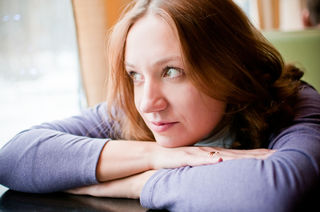Memory
It’s Déjà Vu All Over Again
Psychologists examine that spooky “been here before” feeling.
Posted April 21, 2018

“It’s like déjà vu all over again,” famed New York Yankees catcher Yogi Berra purportedly exclaimed as he witnessed his teammates Mickey Mantle and Roger Maris hit back-to-back home runs. Of course, this isn’t what most of us mean by the expression “déjà vu.” Nevertheless, that eerie experience of a novel event or location feeling familiar is quite common.
Despite the spooky feeling it elicits, there’s nothing supernatural or paranormal about déjà vu. Psychologists now have a fairly good understanding of the memory processes involved in producing it. They can even elicit déjà vu feelings in the laboratory.
Often, when people experience déjà vu, they also get a feeling of premonition. In other words, they not only sense that the situation is familiar, they also feel they know what’s coming next. This association between feelings of déjà vu and premonition is what Colorado State University psychologists Anne Cleary and Alexander Claxton explored in a series of experiments.
A common situation in which déjà vu occurs is when a person enters a novel location, but feels the place is somehow familiar. The déjà vu experience occurs because some aspect of the novel situation does in fact coincide with something the person has encountered before.
For example, you walk into your friend’s apartment for the first time and get an eerie sense of having been there before. It could be that the arrangement of the furniture resembles that of another room you’re familiar with. Although you can’t precisely recall that previous experience, there’s enough of a memory trace for a sense of familiarity to occur. It’s this kind of incomplete memory recall that psychologists take advantage of when they try to elicit déjà vu experiences in the laboratory.
Incidentally, déjà vu as a memory phenomenon is related to the very common "tip-of-the-tongue" experience: There’s a word you want to use, but you can’t quite get it out. You know you know it, and you might even be about to recall some aspects of it, such as how it starts or how it ends. And if someone tells you the word, you know right away that’s the one. Both déjà vu and tip of the tongue are examples of incomplete memory recall, in that each creates a sense of familiarity even though the complete memory can’t be brought to consciousness.
Because déjà vu is an incomplete memory recall for an event, it’s quite reasonable that a feeling of premonition would occur with it. After all, if you watch a movie for a second time, you often have a good sense of what’s coming next, because you’ve experienced it before. But of course, life isn’t a movie that you can watch over and over again. Each life event is unique, even though it may bear superficial similarities to other events you’ve experienced.
Yet, as Cleary and Claxton point out, a feeling of knowing what’s coming next during a déjà vu experience makes sense when you consider what memory is for. Although autobiographical memory records events in our lives, it’s not at all about preserving the past. Instead, the brain stores memories in order to make predictions about future events. For instance, the last time I complimented my wife when she wore her red dress, she gave me a kiss. She’s wearing that red dress now, so maybe if I tell how nice it looks on her, she’ll kiss me again. That’s the logic behind autobiographical memory.
To induce déjà vu sensations in the laboratory, the researchers asked participants to navigate through a series of virtual reality environments, such as a junkyard and an aquarium. After exploring 16 different virtual reality scenes, the experiment moved into the test phase. This time, half of the environments were completely novel, but the other half were similar in layout to a scene they’d previously navigated through. For example, in the test phase, the participants moved through a hedge garden in which the hedges were distributed in exactly the same configuration as the piles of junk in the junkyard.
At a crucial point in the navigation, the virtual reality froze, and the participants responded to a series of questions. First, they stated whether the scene felt familiar or not, and if so, which previous scene the current one reminded them of. They also rated their sense of familiarity on a 0-10 scale. Next, they indicated whether they felt they needed to turn left or right at this juncture, and they rated their certainty on a 0-10 scale. Finally, they were explicitly asked whether the scene had given them a déjà vu experience.
To summarize, the researchers were asking the following questions in these experiments:
- Do similar spatial layouts evoke déjà vu experiences?
- Do déjà vu experiences regularly lead to feelings of premonition?
- If so, are those premonitions accurate?
Here are the results:
- Sometimes, participants were able to recognize that the novel scene had a layout similar to a previous scene. For example, some indicated that the hedge garden reminded them of the junkyard. This means that we can pick up on configurational similarities between one spatial location and another.
- Participants were more likely to have a déjà vu experience when they were navigating through a novel scene that was configurationally similar to one they’d moved through before. In other words, even though they couldn’t explicitly say which previous scene was similar to the present one, they still experienced a sense of familiarity. Thus, the data support the standard explanation for déjà vu.
- Participants were far more confident about their choice of turning left or right when they either indicated that they recalled the previous similar scene or said that they had a déjà vu experience. In contrast, if they said the scene was unfamiliar, they had low confidence in their prediction. This result seems to simply be commonsense—but….
- The strength of the participants’ confidence in their decision to turn left or right had no relation to what the correct response was. In other words, their ability to predict a left or right turn was at chance levels, even in situations they had navigated before.
To summarize, similar spatial layouts do sometimes elicit déjà vu experiences, which in turn often trigger feelings of premonition. Thus, the researchers successfully recreated in the lab what people often report in their everyday life. But despite people’s strong feelings that they know what’s coming next, their actual ability to predict the future was poor in this study, no doubt due to the overload of similar environments they'd just navigated through.

Feelings of déjà vu and premonition seem spooky, even paranormal. But when we understand the common tricks our memory plays on us, there’s nothing unusual about either of these eerie experiences. As a cognitive psychologist, I’ve studied memory for over two decades. So when I started reading Cleary and Claxton’s article, I already had a pretty good idea what the results were going to be. It was like déjà vu all over again.
References
Cleary, A. M. & Claxton, A. B. (2018). Déjà vu: An illusion of prediction. Psychological Science. Advance online publication. doi: 10.1177/095679761774301877/09567976177430




